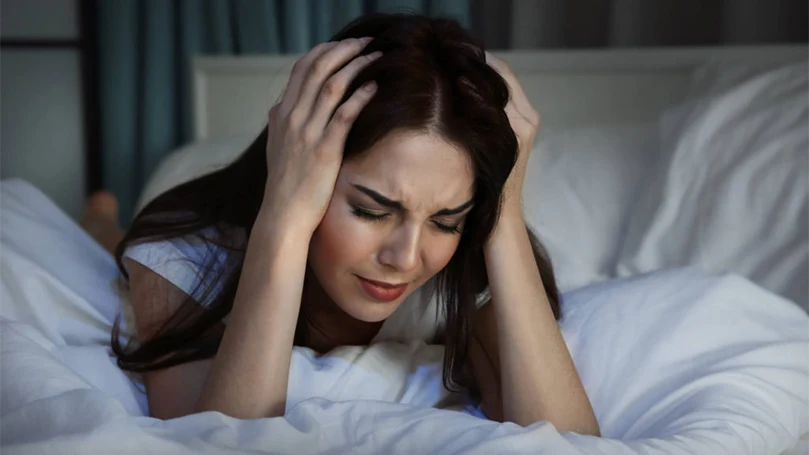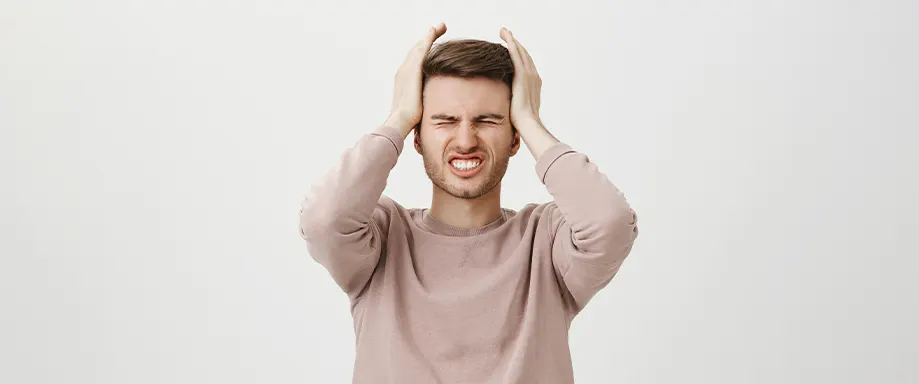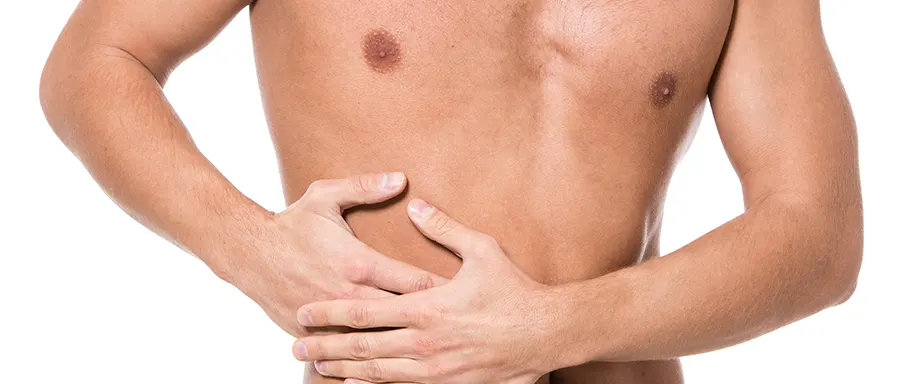What are migraines?
A migraine is a throbbing pain or a pulsating sensation in the forehead or on one side of the head, or both. It can last for several hours and there are many personal methods people use for minimizing the pain. Since there are a lot of types of migraines, there are different solutions to them. You can read our list and try out some until you find the one that suits you best.
Migraines are usually accompanied by nervousness, blurred vision, nausea, sensitivity to light, sound or even scent. The pain usually lasts up to a few hours, but there are instances where it lasts even for days and can cause loss of consciousness.
Migraines usually appear in childhood and early adolescence. Many scientists are still working on determining the exact cause of migraines. For now, all we know is that migraines can be hereditary, and influenced by various environmental factors.

What triggers a migraine?
One of the main causes of a migraine is the sudden expansion or narrowing of blood vessels in the brain which can be caused by various factors. You will probably find yourself in at least a few of these common migraine triggers. There are a lot of triggers that may be caused by another underlying issue, but it’s mostly connected to your lifestyle. Let’s look at the list:
Food
Most common migraine trigger can be food. Eating a lot of salty food, food with additives, food high in fat, caffeine, and dark chocolate. Try to eliminate the following things from your diet:
| Junk food | Junk food like hot dogs, pizza, potato chips, fizzy drinks, and others contain various additives which trigger migraines. |
| Dark chocolate | Chocolate contains caffeine and beta-phenylethylamine, which trigger headaches in almost 22% of people suffering from migraines. |
| Cured or processed meat | Processed meat is high in salt and other food preservatives. Those are nitrates and nitrites that can be found in smoked meat, bacon, ham, sausages, and other. |
| Fatty food | Whether it be milk fat, or animal fat, fat is a common trigger of migraines. Avoiding sour cream, buttermilk and yogurt can be a good preemptive measure. |
| Energy drinks | Energy drinks are not only high in caffeine and taurine, they can also induce anxiety, wakefulness and migraines. |
| Coffee | Although a reasonable amount of coffee can help you throughout the day (200mg/day), too much caffeine, or caffeine withdrawal (not enough) can cause headaches. |
| Green/black tea | Although tea is a great alternative to coffee and energy drinks, avoid green and black tea at all cost because they too are high in caffeine. |
| Citrus fruits | It hasn’t been completely confirmed yet, but some researchers found a link between migraines and citrus fruit. You can try and see for yourself if this is a trigger for you. |
| Aged cheese | Gorgonzola, camembert, cheddar, et cetera can cause migraine headaches because some contain tyramines which interfere with neurotransmitters. |
| Alcohol | It is widely known that alcohol expands the blood vessels, including the ones in your brain. Stay away from red wine! Dehydration is also a cause for migraines – which can be caused by alcohol. |
Hormonal changes
These hormonal changes are connected only to women. It’s directly connected to fluctuations in estrogen levels due to periods. Many women reported having headaches immediately before, or while on their periods because that’s when the estrogen levels reach an all-time low. Pregnancy and menopause can also be one of the triggers for migraine headaches.
There have also been reports that hormonal therapy influences headaches. Taking contraceptive pills, getting an IUD, or going through hormone replacement therapy can also cause or even worsen migraines. This is, however not the case with every woman. Some have also reported that these hormonal therapies lessened their headache frequencies.

Stress and anxiety
Any kind of stimulation that causes a sudden rise or drop in blood pressure can be a serious trigger for migraine headaches. People working under stress, suffering from either social anxiety or panic attacks are more prone to having migraines. Stress is the leading cause of headaches and surely you’ve suffered at least once from either overworking or going through a stressful situation.
Sleep issues
Insomnia, sleep deprivation, getting to much sleep and jet lag can be causes of migraines. Deprivation of REM (rapid eye movement) sleep can be the main cause. Not getting enough REM sleep induces the production of some proteins that are responsible for feeling pain. When sleep deprived, these proteins reach a level that is high enough to trigger pain and headaches. A study funded by drug manufacturer Merck & CoSleep showed that sleep deprivation causes increased expression of proteins p38 and PKA. These proteins help regulate sensory response in facial nerves, which are believed to play a key role in migraines, known as the trigeminal nerves.

Sensory overload
Sensory overload can also be named as a common trigger for migraines. Although it’s not as intense as having an epileptic attack, a migraine attack can also be triggered by bright lights. Interestingly enough, sound and smell can also cause headaches. Migraines can be started in loud rooms, at parties, concerts or festivals. Migraines can also be triggered by smoking, being in the presence of second-hand cigarette smoke, strong perfumes, or other intense smells like paint, paint thinners or even gasoline.
Other
There are many other triggers to migraines that need further research conducted, but are considered fairly common. Take a look at the remaining headache triggers:
| Head trauma | Hitting your head on something, or getting hit can cause migraines. We’re not talking about pain which occurs immediately after being hit, because that passes after a while. Many people reported that a head trauma pain has long passed, while a migraine headache, which hurts very differently occurred. |
| Physical activity | Extensive working out, and great physical extersion can cause the change in blood pressure that can cause headaches. If you’re moving, try to avoid lifting heavy things incorrectly – the extersion can cause pressure in the head and cause a migraine attack. |
| Weather | Unfortunately, this is a trigger that we have no control of. Sudden changes in barometric pressure are the main culprits of headaches. In these cases it’s best to stay at home and rest – wait it out and pop a few pain relief medications. |
| Drug abuse | Prescription, as well as over-the-counter agents are often abused. Some include aspirin, acetaminophen, and caffeine. The excessive and/or abusive intake of many drugs can trigger headaches, as well as the phenomenon known as rebound headache (overuse of headache medicine). |
| Substance abuse | Illicit drugs are a sure way to get migraine headaches. Most common reports from patients that have been using are cocaine, amphetamines and marijuana. |
| Smoking | Smoking is also one of the risk factors for headaches. Although it can cause them, the nicotine withdrawal can also be a trigger for migraines. Also, some nicotine replacement therapy drugs can induce migraines. |
Now that we’ve learned why we have headaches, we can jump onto learning how to prevent them. By learning the causes and effects of migraines we can definitely improve our lifestyle and make sure to have less frequent headaches. Many people suffer from migraine attacks at night, which affects sleep in numerous ways. In order to improve the quality of your sleep, you need to get rid of migraines – and vice versa. Getting good and high-quality sleep is decreasing your chances of having migraines.
Breaking an endless cycle
It really is an endless cycle. Many people reported not getting enough sleep because of migraines, all the while getting even more migraines from sleep deprivation. Here we are going to talk about some of the best ways to get rid of migraine headaches before going to bed, or treating them when they occur during the night.

Create a regular sleep schedule
This means that you have to go to bed and wake up at the same time – every day. Yes, even on weekends and during holidays. Our bodies love routine – our internal clock, to be exact. We cannot disrupt our natural sleeping pattern if we want to function properly throughout the day. And you probably know that a migraine makes you pretty non-functional. Make sure that you get at least 6-8 hours a sleep a day, too.
Meditation, yoga, breathing exercises
All of the above can help you balance your blood pressure before bed. Light yoga exercises will decrease muscle tension, make sure to stretch before and after. Meditation is here to calm your mind, and breathing exercises can help you maintain that calmness both physically, mentally and spiritually. A lot of stress that adds up during the day can be relieved through these methods.

Don't eat or drink right before bed
Try not to eat at least an hour before bed. If you want to fall asleep fast and not have difficulties during the night, the best case scenario is to eat an hour before bed. Avoid heavy foods, and take something light, make a salad, eat some avocado, turkey, oats or rice. These foods are good on the stomach and won’t cause acid reflux or heartburn, which can disrupt your sleep.
Check your mattress
Many migraine headaches can also be caused by bad posture while sleeping. If your spine isn’t in the correct curvature during night, your shoulders, hips and neck will suffer. Your blood flow might be disrupted and decrease the amount of oxygen brought to your brain. It’s important for normal brain functioning, especially during the REM phase. So, take a look at your mattress. If it’s worn out, doesn’t support your body correctly, and you usually have trouble falling asleep on it, it’s time to replace it. If you don’t have the funds to replace a whole mattress, consider investing into a new mattress topper. They are super cheap but will make your bed feel like new.

Pillow is important too
The pillow you sleep on should also provide enough neck and shoulder support. If you’re sleeping on your stomach for example, you need a flatter pillow, otherwise your whole spine will be bent upwards. Finding the right pillow isn’t hard: based on your sleep position and health conditions, you can find various types of pillows. For example:
| Memory foam pillow | Memory foam is great for back and side sleepers because it conforms to your body and creates a nice spine curvature. Your neck won’t hurt in the morning, and you can say goodbye to morning migraines. |
| Down pillow | Investing in a new down pillow is a great idea if you’re a stomach sleeper. If you’re allergic to down, you can find many synthetic down pillows which are hypoallergenic. |
| Latex pillow | The ultimate firmness for all back sleepers. Your neck will be perfectly aligned, and your shoulders won’t feel any pressure with this pillow, ultimately reducing your migraine frequencies. |

No electronics
Abstain from using electronic devices before going to bed, especially phones, tablets, and computer. There is something called ‘blue light’ which is emitted from the aforementioned screens. Exposing yourself to blue light before bedtime can affect the way you sleep. Blue light decreases melatonin levels, which is the famous sleep hormone produced in our brains. If you don’t want to toss and turn in your bed for hours on end in hope of catching some Z’s, then turn that phone off and don’t look at it for at least an hour before bed.
Oh, no, it's happening again – What do I do?
It's okay – despite all of the aforementioned things, there are times when you simply can't avoid a migraine attack. The best thing to do is take some pain meds that you know usually work for you best and wait it out. For example, if I’m having a strong migraine, I take ibuprofen, and close myself in a dark and cold room. Here are some other examples:
- Some people also found it helpful to take a cool shower or put a cooling face mask, especially on the area around eyes.
- Try not to eat too spicy or fatty food, because it can promote nausea and acid reflux.
- Stay away from bright and loud places to prevent sensory overload.
- Naps can also help get rid of migraines. A short, 45-minute nap can definitely help, especially if you're feeling exhausted after a long day at work.
- If you didn't drink coffee that day – then try drinking one cup and see what happens.
- Drink water! This is the most important one. Migraines are primarily caused by dehydration – and water is your best friend if you want to get rid of it.
- Ask someone to give you a massage. They should rub your neck, scalp and shoulder area. You might need to get a massage to improve blood flow and release tension in your upper body.
- Try stretching a little bit an doing light warm-up exercises. Do not strain yourself – the minute you feel a pulsating sensation in your head, it's time to stop and lie down.
- Rest your eyes. During migraine headaches, many people have eye strain. Just try to rest your eyes for 15-20 minutes, especially if you're working at a computer.
- Breathe. Yes, breathe! Remember those breathing exercises? Put them to good use. You need to calm your heart rate, and focus on something else rather than the pain.

Find your best method for fighting migraines
We’ve discovered numerous options on how to treat migraines when they occur, and how to avoid having them. However, it is still up to our top researchers to learn why we have migraines and find a cure once and for all. Until then, stick to this list of things to do to avoid having migraines. And, of course, when they happen, learn how to deal with them accordingly, in order to prevent it from becoming something more serious. Living with migraines can be tricky, but you can make it easier for yourself with these tricks at any time.
















There are no comments yet
"*" indicates required fields